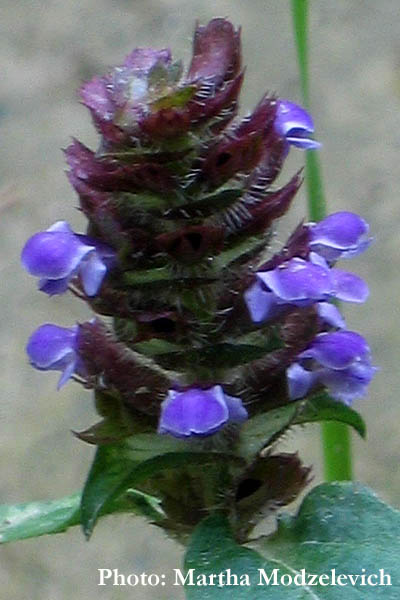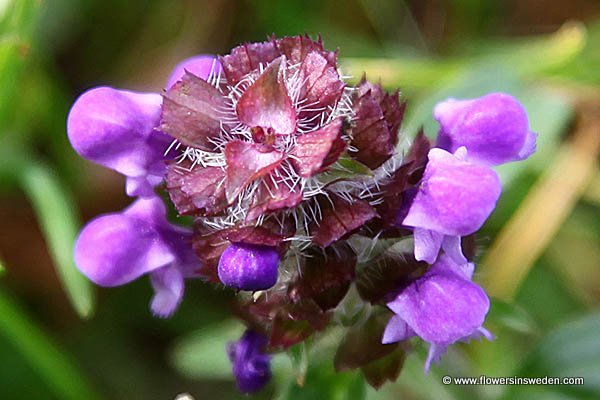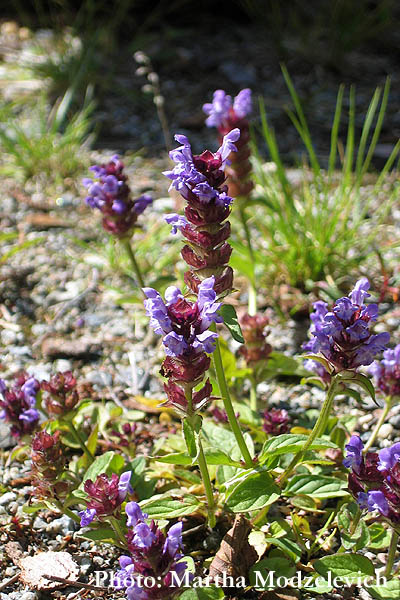|
|
| Life form: |
| Perennial herb |
| Stems: |
| 10-50 cm, 4-angled, crimson tinged, and erect to decumbent, glabrous to short-hairy |
| Leaves: |
| Lance shaped, serrated and reddish at tip |
| Flowers: |
| Two lipped and tubular, top lip purple, and bottom lip is often white |
| Flowering Period: |
| June-August |
| Fruits: |
| Fruit-spike |
| Habitat: |
| Waste ground, grassland, woodland edges, usually on basic and neutral soils |

Derivation of the botanical name:
Prunella, brunella, Brunfels, is from the German Braune, a kind of "quinsy" which the plant was supposed to cure.
vulgaris, Latin for "common".
- The standard author abbreviation L. is used to indicate Carl Linnaeus (1707 – 1778), a Swedish botanist, physician, and zoologist, the father of modern taxonomy.
History:
According to the 16th-century herbalist John Gerard, ‘it serves for the same that Bugle does, and in the world there are not two better wounds herbs, as has been often proved'.
The 17th-century botanist Nicholas Culpeper wrote that the plant is called selfheal because ‘when you are hurt, you may heal yourself’.

|



